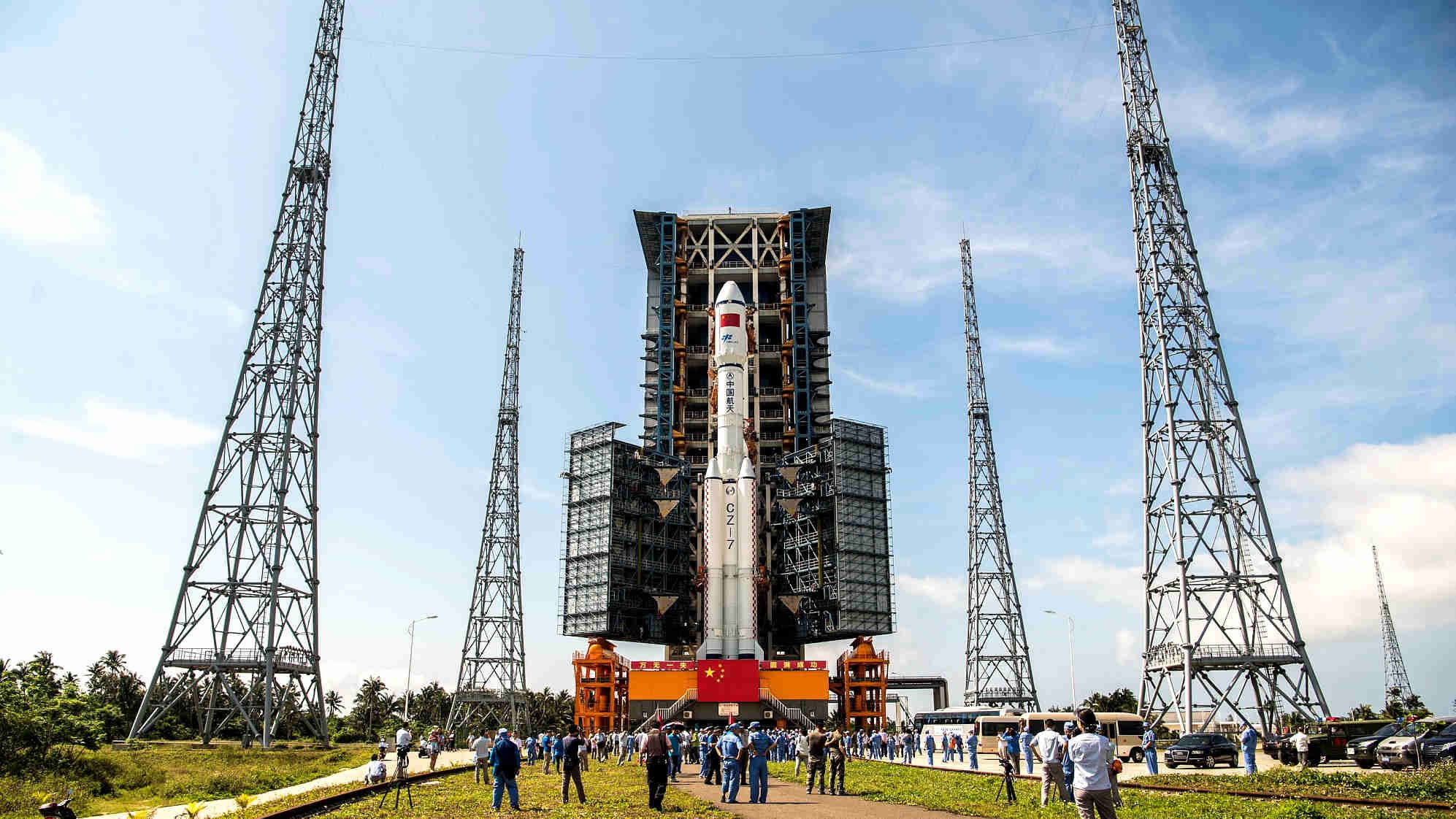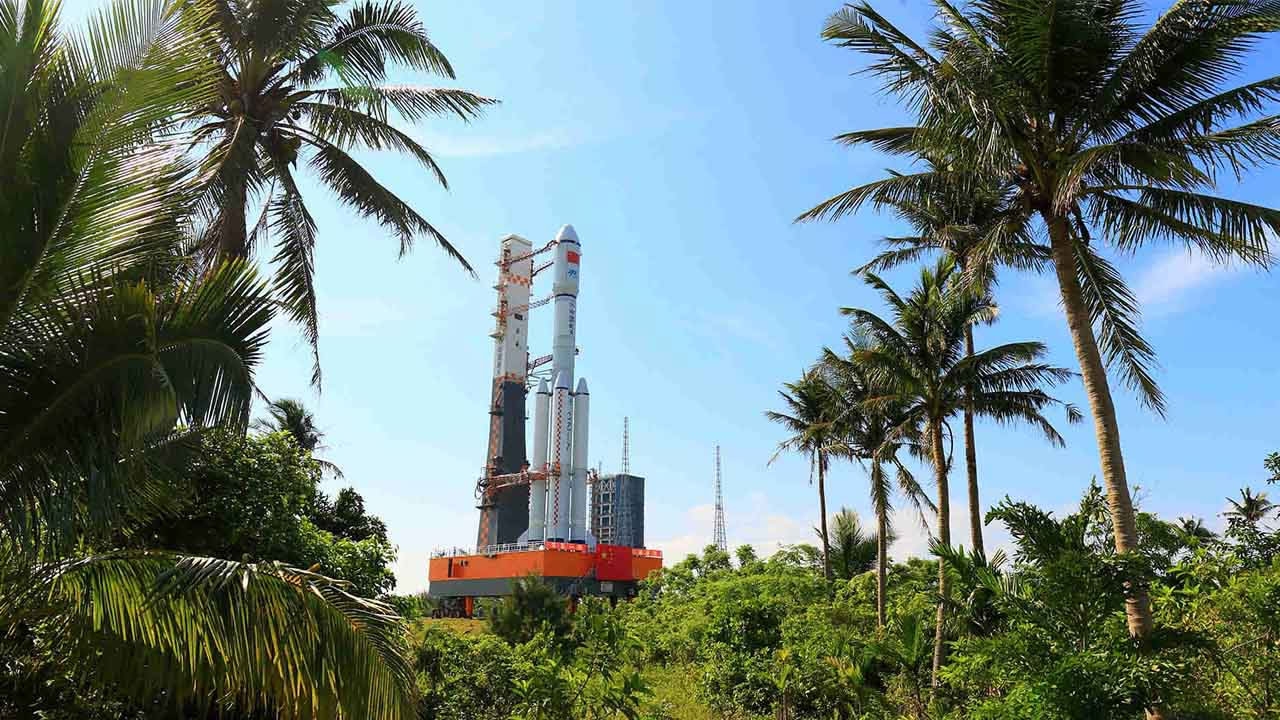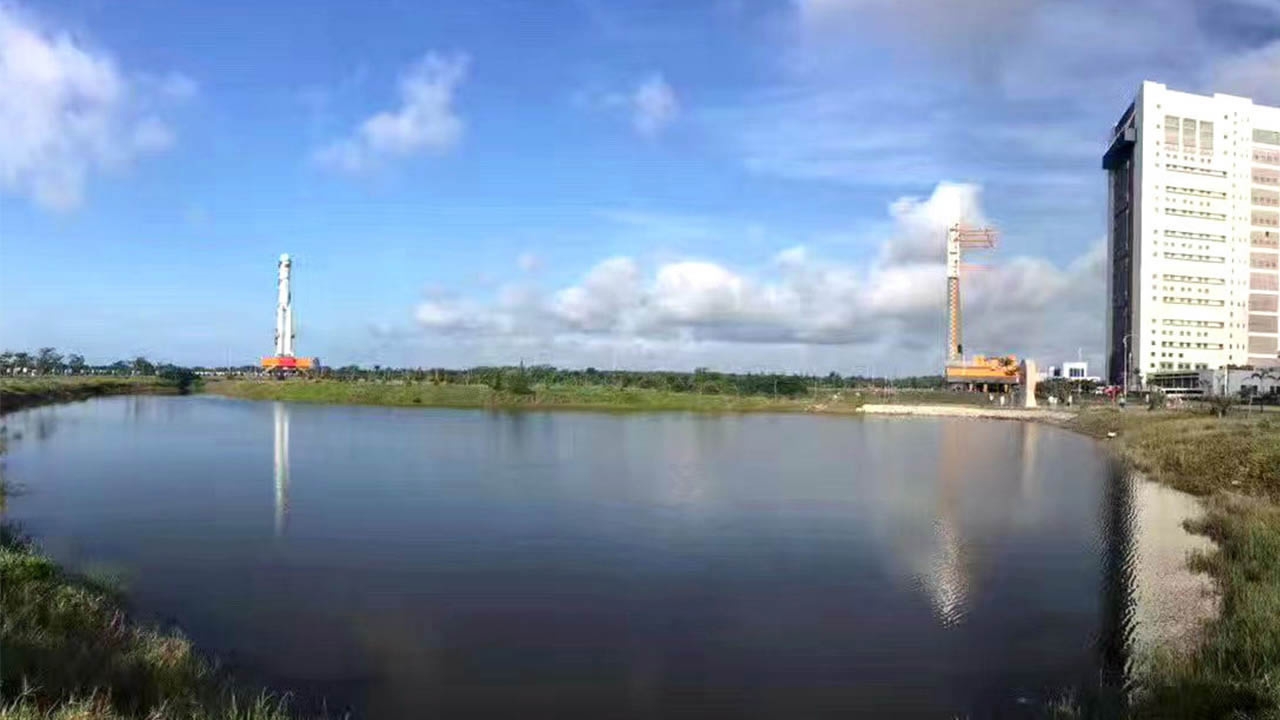
Tech & Sci
17:07, 17-Apr-2017
Countdown to launch of China’s first cargo spacecraft

By CGTN's Ge Yunfei
China's first cargo spacecraft, Tianzhou-1, is now being lifted onto the launch pad on a Long March-7 rocket at Wenchang Space Launch Center in south China's Hainan Province. It will be launched between April 20 and 24.
Since the spacecraft arrived at Wenchang in the middle of February, scientists and engineers have been assembling parts and conducting tests.

The rocket carrying the cargo spacecraft was fixed on the mobile launch platform to finish the 2.8-kilometer journey from the assembly building to the launch site by rail. It took about three hours to make this final journey. Moving such a massive object is no easy task, especially when it comes to the heaviest and largest ever spacecraft in China.
Wu Yi, director of support systems at Wenchang Space Launch Center, told CGTN, "We have four big curved rails and the whole apparatus weighs over 1,800 tons. So it poses greater stability and safety challenges to the transport of this giant. We practiced and drilled a lot beforehand."

There are two notable characteristics of this cargo spacecraft. The first is its size. Tianzhou-1 is bigger than any previous spacecraft made by China. With a net weight of 13 tons, it can carry a payload of up to 6.5 tons. If the launch is successful, China will have surpassed Europe and Japan in terms of cargo load ratio.
And the second is the control mode. Tianzhou-1 travels in orbit at a higher speed than Earth spins. So one ground station can only track a satellite for about five minutes. From Kashgar in the west to Qingdao in the east, Chinese ground stations can only cover very small parts of the orbit. So this time the crew member on the ground will use three satellites to control the maneuvers of Tianzhou instead of ground control stations.
When the rocket arrives at the launch pad, rotating platforms on the two sides of the tower will be swung around it to allow for fueling and final checks.
Wang Ya said, “The Tianzhou-1 launch is the first field mission for the Long March-7 series rockets. In the future, Tianzhou spacecraft will be like the deliverymen to our space station."
The Tianzhou-1 cargo ship will carry fuel and experiments to the space laboratory Tiangong-2. The mission is an essential step in China’s plan to establish a permanent space station around the year of 2022.
2313km

SITEMAP
Copyright © 2018 CGTN. Beijing ICP prepared NO.16065310-3
Copyright © 2018 CGTN. Beijing ICP prepared NO.16065310-3